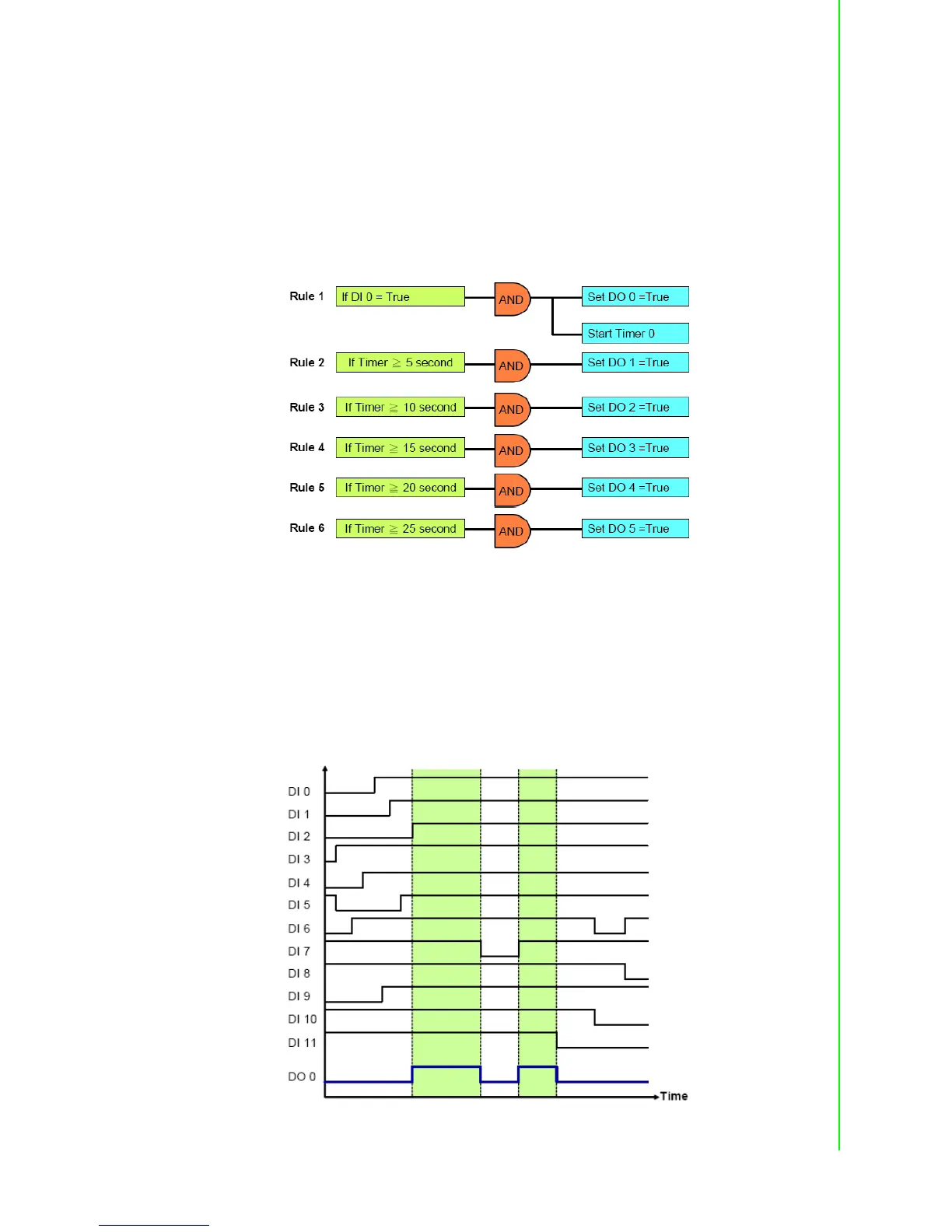111 ADAM-6200 User Manual
Chapter 4 System Configuration
In the example project, DI 0 is used as a trigger to start the sequential control action.
Therefore, when DI 0 turn to logic high (at the moment T0), DO 0 will also change to
logic high immediately. Then, DO1 ~ DO5 will sequentially be activated to logic high
after a specific time interval. You can decide the time interval t1 ~ t5 (They can be dif-
ferent values). In this example project, t1 ~ t5 are all 5 seconds.
We can use 6 logic rules and 1 internal timer for this GCL application. In the first logic
rule, DI 0 is used to trigger Timer 0 and DO 0. Since the timer has been triggered, it
will start counting time and DO 1 ~ DO 5 will be activated after a specific amount of
time has elapsed.. The GCL architecture can be shown by as below:
4. Multiple DI to control one DO (12 DI to 1 DO)
In many applications, only when multiple digital inputs are logic high (related condi-
tions are all satisfied), digital output status will become logic high. In the example
project we provide, only when DI 0 ~ DI 11 are all logic high at the same time, the DO
0 will become logic high. The time chart of this application can be shown as below.
The green band area indicates the moment that all 12 DI are logic high, thus DO 0
will be logic high. For other time interval, there is at least one DI channel whose value
is not logic high, so DO 0 value is logic low.

